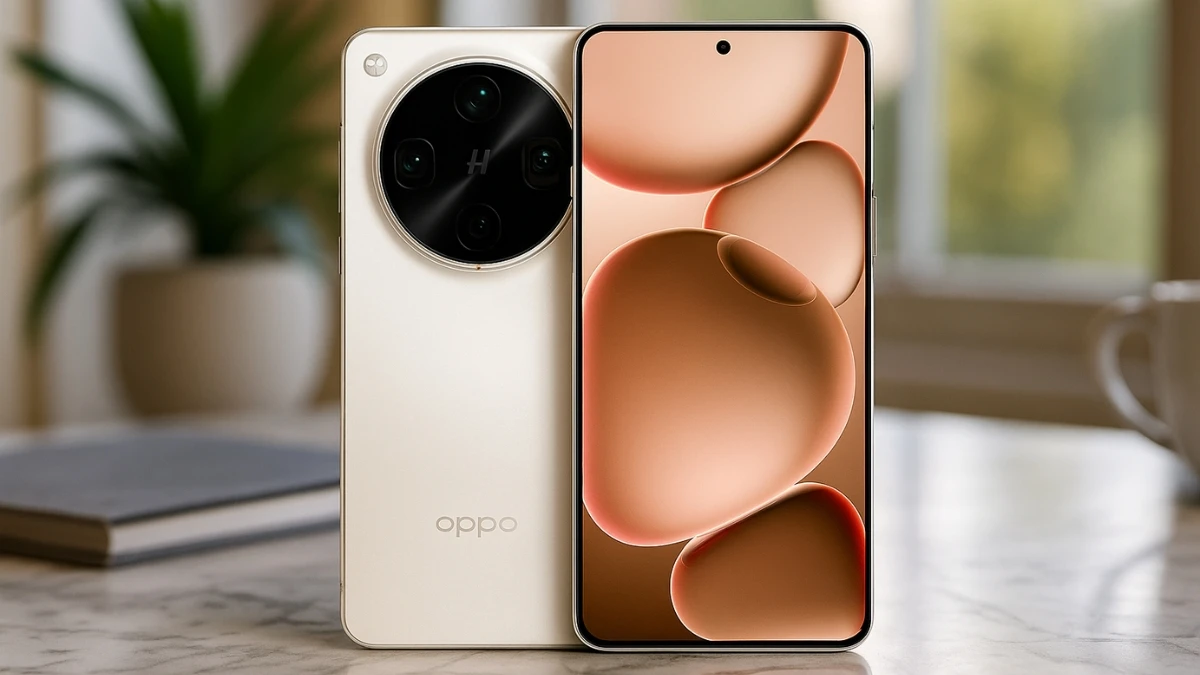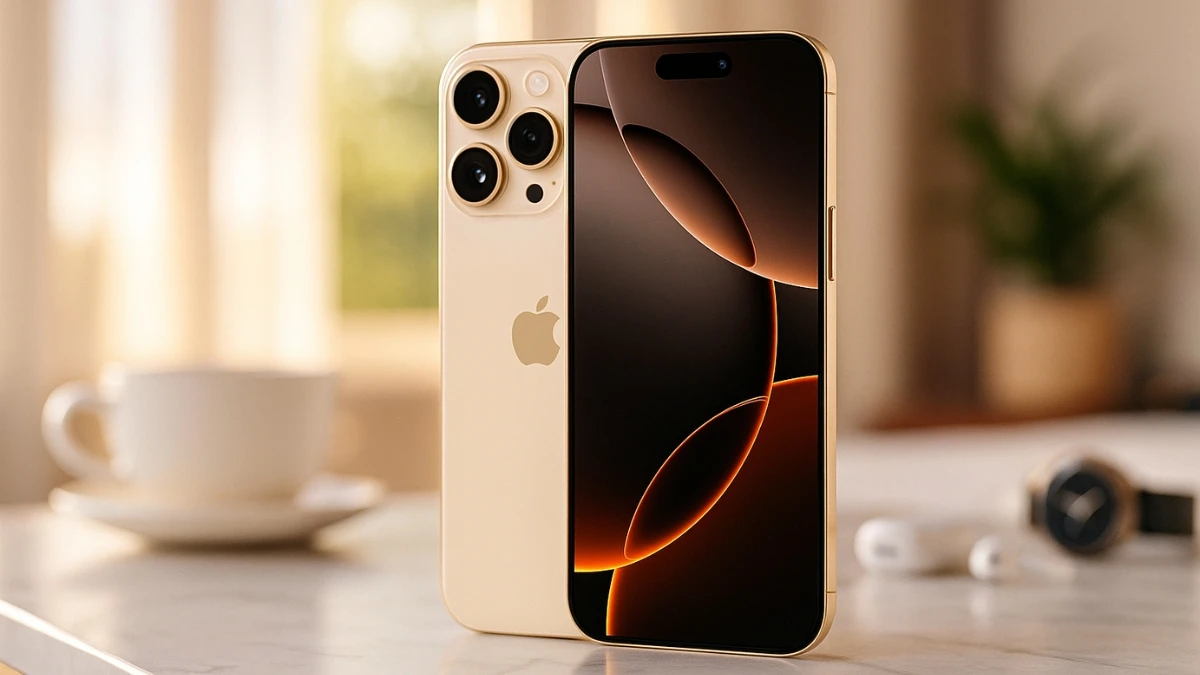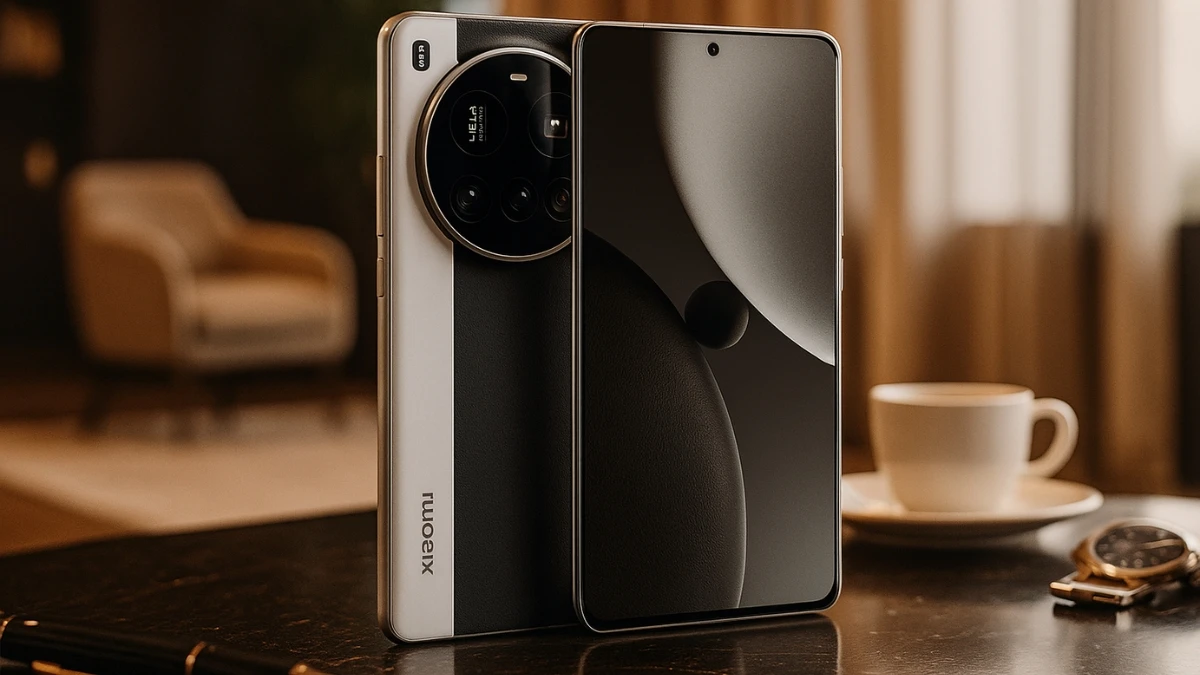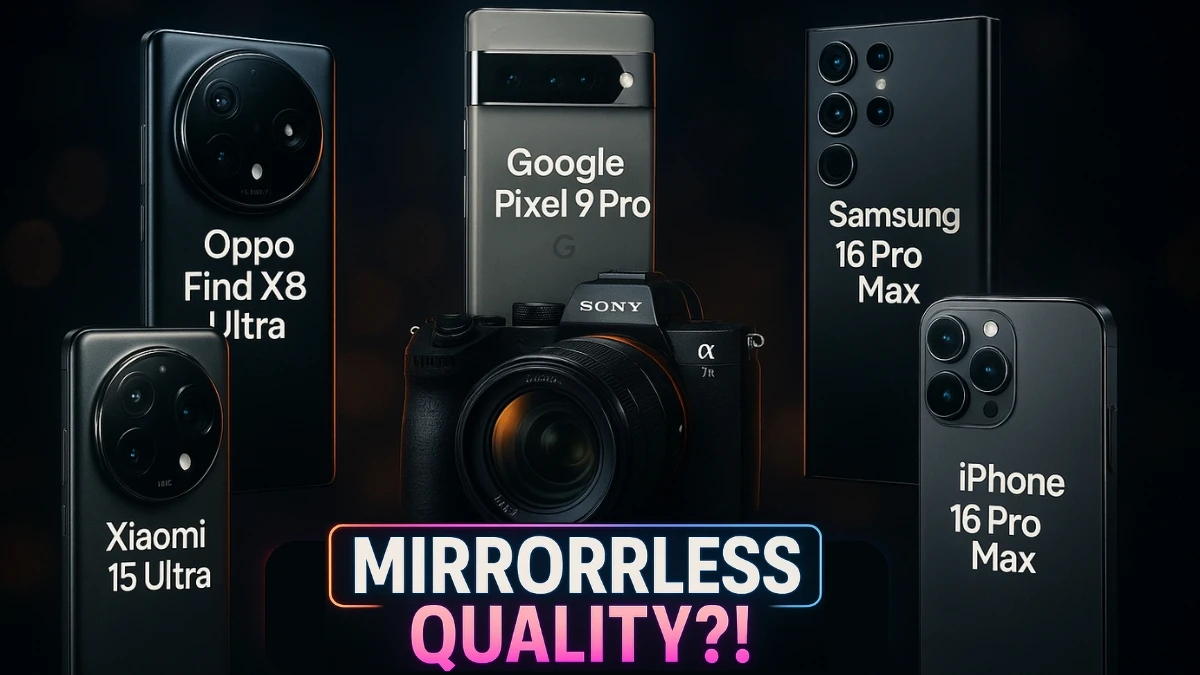Top 5 Camera Phones with Mirrorless-Level Photo Quality in 2025
The smartphone camera revolution has reached a tipping point. The Xiaomi 15 Ultra makes me seriously question if I need a mirrorless camera, and it's not alone.
In 2025, flagship smartphones are delivering image quality that would have been unthinkable just a few years ago, challenging the dominance of traditional cameras in ways that matter to real photographers.
Bottom Line Up Front: The Xiaomi 15 Ultra leads 2025's camera phone revolution with its 1-inch sensor and dual telephoto setup, followed by Apple's iPhone 16 Pro Max for video excellence, Samsung's Galaxy S25 Ultra for versatility, Google's Pixel 9 Pro for computational photography, and Oppo's Find X8 Ultra for hardware innovation.
The New Reality of Smartphone Photography
The question isn't whether smartphones have completely replaced mirrorless cameras—they haven't. With their interchangeable lenses, larger sensors, and raw imaging capability, the answer is: not yet.
But for the vast majority of photography scenarios, the gap has narrowed to the point where it's becoming increasingly difficult to justify carrying additional equipment.
For most users looking for something for day-to-day photography though, the best smartphone cameras will achieve all that they need, often beating cheap compact cameras.
The key difference in 2025 is that we're no longer talking about "good enough" smartphone cameras—we're talking about genuinely excellent ones that can produce professional-quality results.
What defines "mirrorless-level" quality in a smartphone? It's a combination of factors: large sensors approaching 1-inch in size, sophisticated lens systems covering multiple focal lengths, advanced computational photography that enhances rather than over-processes images, and professional video capabilities that rival dedicated cinema cameras. Let's explore the five phones that have achieved this ambitious standard.
| Rank | Mobile |
|---|---|
| 5 | Oppo Find X8 Ultra |
| 4 | Google Pixel 9 Pro |
| 3 | Samsung Galaxy S25 Ultra |
| 2 | iPhone 16 Pro Max |
| 1 | Xiaomi 15 Ultra |
5. Oppo Find X8 Ultra: Hardware Innovation Leader

Oppo may not have the same brand recognition as its competitors, but the Find X8 Ultra represents serious innovation in smartphone camera hardware. With Find X8 Ultra, Oppo has climbed the camera Olympus for the year 2025. Things don't get much better than this.
Four 50MP Sensors
The Find X8 Ultra takes a unique approach with its camera system:
- Main Camera: 50MP with huge 1-inch sensor producing natural bokeh
- Ultra-wide: 50MP sensor with wide coverage
- Telephoto cameras: Two separate lenses with 3x and 6x lossless zoom, both featuring very large sensors for periscope lenses
- Build Quality: The X8 Ultra is also one of the best smartphones overall
Hasselblad Partnership
On paper, the Hasselblad camera setup of the Find X8 Ultra is very similar to what the Pro model has. However, the four 50 MP sensors on the back are significantly larger, with the exception of the ultra-wide-angle lens.
The larger sensors make a real difference in image quality. The main camera with its huge 1-inch sensor produced very good photos with natural bokeh in our testing. The Oppo phone also performs really well in low-light scenarios.
Zoom Excellence
The two telephoto cameras with OIS and 3x and 6x lossless zoom also have very large sensors (1/1.56" and 1/1.95") as far as periscope lens go, producing great photos thanks to native magnification - up to 10x is possible.
This hardware approach pays dividends in real-world use, particularly for photographers who frequently shoot at longer focal lengths.
4. Google Pixel 9 Pro

Google's approach to smartphone photography has always been different, and the Pixel 9 Pro represents the pinnacle of computational photography. The Pixel 8 Pro was simply the best photography experience on a phone, and with the same camera setup, Google is keeping the good times rolling.
The Magic Behind the Lens
While other manufacturers focus on hardware specifications, Google's strength lies in software intelligence:
- Main Camera: 50MP with advanced computational processing and zero shutter lag
- Ultra-wide: 48MP sensor optimized for versatility
- Telephoto: 48MP with optical zoom and advanced digital enhancement
- AI Features: Industry-leading computational photography algorithms
The quality and consistency of its cameras are sublime, with the phones particularly excelling in night-time photography. Google's Night Sight mode has become the gold standard for low-light smartphone photography.
AI That Actually Helps
But where Google is improving is with its ever-increasing stable of AI-enhanced modes like blur reduction, which uses machine learning to unblur images, and 'Best Take' which lets you swap the expressions of photo participants so everyone looks their best.
These aren't gimmicky features—they solve real photography problems. The blur reduction can salvage shots that would otherwise be unusable, while Best Take ensures group photos where everyone looks good, something that's surprisingly difficult to achieve with traditional photography.
Professional Controls
For anyone who wants to get a bit more serious with their photography, the Pixel 9 Pros also have a RAW capture letting you take full advantage of the megapixel-packed sensor, as well as a new pro controls mode giving you manual control over the look of your images just like you might get with a mirrorless camera.
The Consistency Factor
What sets the Pixel apart is its reliability. Google is leaps and bounds ahead here, and everyone else is playing catch-up when it comes to computational photography. The phone consistently produces excellent results regardless of shooting conditions, making it an ideal choice for photographers who want to focus on composition rather than technical settings.
3. Samsung Galaxy S25 Ultra

Samsung's Galaxy S25 Ultra takes a different approach to camera excellence: maximum versatility. The new Samsung Galaxy S25 Ultra top flagship is here, and from the get-go, it looks set to beat and improve the Galaxy S24 Ultra's success in the camera department.
A Camera for Every Situation
The S25 Ultra's camera array is designed for photographers who want options:
- Main Camera: 200MP f/1.7 with adaptive pixel technology and optical image stabilization
- Ultra-wide: Samsung Galaxy S25 Ultra has the best camera specs of all S series models, with a 50MP ultra-wide lens, improving on the S24 Ultra's 12MP
- Telephoto 1: 50MP f/3.4 with 5x optical zoom and periscope design
- Telephoto 2: 10MP f/2.4 with 3x optical zoom
This setup provides an impressive 2x, 3x, 5x and 10x optical zoom feature, giving photographers unprecedented flexibility in a single device.
AI-Powered Intelligence
With the addition of more Galaxy AI features, like improved generative edit features and nightography, make it a well-rounded package for photographers.
The Galaxy AI ProVisual Engine enhances performance without sacrificing the natural look that serious photographers demand.
With intelligent scene recognition, the AI adjusts settings for optimal lighting, contrast, and colour, ensuring stunning photos every time. But unlike some AI implementations that can appear heavy-handed, Samsung has refined its approach to enhance rather than replace photographer intent.
Real-World Performance
Well, continuing the strong foundation laid by the Galaxy S24 Ultra, the new Galaxy S25 Ultra tops the PhoneArena Camera Score for devices available in the US! with a score of 158 points.
This improvement comes primarily from still photography performance, where the Galaxy S25 Ultra achieves the best score we've measured so far, a combination of exceptional performance of the main, ultrawide, zoom, and selfie cameras.
The ultra-wide camera deserves particular mention. The Galaxy S25 Ultra has the best wide-angle camera we've tested so far, and it is definitely impressive. It has everything that a camera should have: excellent dynamics, superb HDR, nearly perfect subject exposure, great detail, and finally, no noticeable oversharpening.
Professional Features
Video capabilities have also improved significantly. Samsung has improved HDR recording from 8-bit to 10-bit, which captures more information and delivers videos with richer colors and greater dynamics. Galaxy Log is also a new feature, enabling the capture of flat video that's perfect for color-grading in post.
2. iPhone 16 Pro Max: Video Excellence Meets Photo Perfection

Apple's iPhone 16 Pro Max represents the pinnacle of the company's camera engineering, and this is undoubtedly Apple's finest camera phone to date, and the best camera phone you can buy. While Android competitors may edge ahead in certain specifications, the iPhone's holistic approach to mobile photography creates an experience that's hard to match.
What's New and Notable?
The iPhone 16 Pro Max builds on a solid foundation with targeted improvements:
- Main Camera: 48MP Fusion camera with f/1.78 aperture and second-generation sensor-shift optical image stabilization
- Ultra-wide: 48MP (upgraded from 12MP), optimized for low-light conditions and macro photography
- Telephoto: 12MP with 5x optical zoom, now standard on both Pro models
- Camera Control: A new hardware button that changes how you interact with the camera
The iPhone 16 Pro received two significant camera upgrades over the iPhone 15 Pro. The first of these is a new ultra-wide camera, with the iPhone 16 Pro having a 48MP sensor, in place of the 12MP one used by its predecessor.
Video Leadership
Where the iPhone 16 Pro Max truly excels is video. In video mode, the new iPhone again managed to grab the top spot in our ranking, thanks to outstanding test results across the board at 4K resolution and with the 60fps variable frame rate.
The professional video features are particularly impressive:
- 4K recording at up to 120fps
- The 15 Ultra also joins an exclusive group, by being the only other phone besides the iPhone 15 Pro and iPhone 16 Pro lines to support ACES (Academy of Motion Picture Arts and Sciences) Log video capture
- ProRes video recording with external storage support via USB-C
- Advanced stabilization across all focal lengths
The Apple Difference
The difference between 1× and 2× is more than just a closer look — a change in focal length like this helps make the background proportionally larger. Apple's computational photography approach focuses on natural-looking results rather than eye-catching processing, which often produces more timeless images.
Even though the primary camera hardware on the Pro Max remained mostly unchanged over the previous model, Apple still managed to make improvements in a range of image quality and camera performance areas.
The improvements are subtle but meaningful: better HDR processing, improved color performance, and enhanced low-light capabilities.
Why It Competes with Mirrorless
The iPhone 16 Pro Max's strength lies in its consistency and reliability. In our tests, the latest iPhone offered a zero shutter lag in most conditions, resulting in instant capture of the scene as the shutter button is pressed. This kind of performance reliability is what professional photographers depend on.
1. Xiaomi 15 Ultra: The New Camera King

If there's one phone that has photographers reconsidering their camera bags, it's the Xiaomi 15 Ultra. If money is no obstacle (and you can actually buy the handset in your country), the Xiaomi 15 Ultra is my favorite camera phone on the market.
The Hardware That Changed Everything
At the heart of the Xiaomi 15 Ultra is something special: a 23mm Leica Summilux optical lens, 1-inch image sensor, and pinnacle optical design. This isn't just marketing speak—it's one of the few remaining 1-inch sensors in the smartphone market, a piece of hardware that fundamentally changes what's possible in mobile photography.
But Xiaomi didn't stop there. The phone features a comprehensive camera system that includes:
- Main Camera: 50MP with 1-inch sensor and f/1.63 Leica Summilux optical lens
- Ultra Telephoto: The Leica 200MP ultra telephoto introduces a new pinnacle in mobile optics with 4.3x zoom (100mm equivalent)
- Telephoto 1: 50MP with 3x zoom (70mm equivalent)
- Ultra-wide: 50MP Samsung ISOCELL JN5
Why It Feels Like a Real Camera
The 15 Ultra's 2x results are truly excellent as well - there are no obvious signs of any digital trickery, and pixel-level detail is essentially as good as it is at 1x. But what sets the Xiaomi 15 Ultra apart isn't just technical prowess—it's the photographic experience.
Two aspects really make the 15 Ultra stand out in my eyes. First, its sumptuous colors. Xiaomi provides three color profiles as a base and many more filters to apply on top, making it easy to find a unique profile to call your own. The Leica partnership brings authentic color science that produces images with mood and character, not just clinical accuracy.
The second standout feature is that 3x telephoto lens. Its 70mm focal length is brilliant for natural-looking portraits, while the large sensor and wide aperture make this a brilliant lens for framing shots that look and feel much like shooting with a "proper" camera.
Professional Video Capabilities
Video performance matches the still photography excellence. For professionals, Xiaomi 15 Ultra supports 4K 60fps Log video recording across all focal lengths. As the ACES Product Partner, Xiaomi 15 Ultra brings a more professional color experience to users. The phone also supports 4K 120fps cinematic slow motion video recording with both the 23mm main camera and 100mm periscope telephoto.
The Verdict
The Xiaomi Ultra 15 delivered a very good performance in the DXOMARK Camera tests, achieving the best results of a Xiaomi device to date.
More importantly, the tele zoom is the Xiaomi's main strength, with excellent performance across all tele-zoom settings. In our tests, the 15 Ultra achieved the best results for tele zoom to date.
This isn't just another flagship with good cameras—it's a fundamental shift in what's possible with smartphone photography.
The Technology Behind Mirrorless-Level Quality
Sensor Size: The Foundation of Quality
The fundamental advantage of mirrorless cameras has always been sensor size. A premium digital camera can pack in a physically larger imaging sensor, which allows it to produce images with higher quality, and lower noise without multi-shot processing.
However, smartphone manufacturers have pushed sensor sizes to their practical limits. The Xiaomi 15 Ultra's 1-inch sensor is approaching the size found in premium compact cameras, while maintaining the convenience of a pocketable device.
Computational Photography: Bridging the Gap
Where smartphones truly excel is in computational photography. In bright sunny conditions, the difference may not be as noticeable, but in low-light conditions, this is where you're more likely to notice it between smartphones and traditional cameras.
Modern smartphones use AI and machine learning to overcome hardware limitations. They capture multiple exposures, apply advanced noise reduction, and enhance details in ways that would require significant post-processing with traditional cameras.
Lens Systems: Versatility in Your Pocket
The majority of mirrorless and DSLR cameras also provide more resolution, with 24MP, 40MP, 47MP and 61MP (etc) sensors giving the full-resolution, without pixel-binning.
While smartphones may not match absolute resolution, they offer something mirrorless cameras can't: multiple focal lengths in a single, compact device.
The zoom ranges available on phones like the Galaxy S25 Ultra (2x to 100x) or the Xiaomi 15 Ultra (14mm to 200mm equivalent) provide versatility that would require multiple expensive lenses on a traditional camera system.
Real-World Performance: Where Smartphones Shine
Convenience Factor
The best camera is the one you have with you, and smartphones win this battle decisively. Smartphone cameras leapt forward again this year, further blurring the lines between phones and a pro camera. The advancement in editing capabilities and image quality have created all-in-one machines of the future.
Computational Advantages
Modern smartphones offer capabilities that traditional cameras struggle to match:
- Night modes that can see in near darkness
- Portrait modes with adjustable depth of field after capture
- AI scene recognition that optimizes settings automatically
- Real-time HDR processing for challenging lighting conditions
Video Revolution
Smartphone video capabilities have evolved particularly rapidly. Only specialised tasks like extreme telephoto wildlife or ultra-high dynamic-range studio work still demand dedicated cameras.
Features like 4K 120fps recording, professional Log formats, and advanced stabilization are now standard on flagship smartphones, capabilities that required expensive professional equipment just a few years ago.
Choosing Your Perfect Camera Phone
For the Serious Photographer: Xiaomi 15 Ultra
If image quality is your primary concern and you want the phone that most closely replicates the mirrorless camera experience, the Xiaomi 15 Ultra is the clear choice. Its 1-inch sensor, Leica partnership, and exceptional zoom capabilities make it the most camera-like smartphone available.
Best for: Landscape photography, portraits, travel photography, anyone considering replacing a dedicated camera
For Content Creators: iPhone 16 Pro Max
Built for Apple Intelligence. Durable titanium design. Camera Control. 4K 120 fps Dolby Vision. A18 Pro chip. The iPhone 16 Pro Max excels in video production and offers the most polished overall experience for creators who need reliability above all else.
Best for: Video content creation, social media, professional video work, ecosystem integration
The Future of Mobile Photography
Where We Stand Today
Whether you want unbeatable zoom, effortless point-and-shoot AI magic, cinema-grade video or manual pro controls, 2025 offers a best camera phone for every style of shooter. We've reached a point where the question isn't whether smartphones can take good photos—it's whether traditional cameras can justify their size and complexity for most users.
What's Still Missing
While smartphone cameras have made tremendous strides, certain limitations remain:
- Interchangeable lenses: The flexibility to choose specialized glass for specific situations
- Physical controls: Dedicated dials and buttons for quick setting changes
- Extreme conditions: Very low light or high-speed action photography
- Print quality: Large format printing still favors larger sensors
The Road Ahead
The improvements we've seen in 2025 represent just the beginning. Future developments in AI processing, sensor technology, and computational photography will continue to close the gap between smartphones and traditional cameras.
Cameras are being optimized for the future, where photography relies increasingly on magic — and it today's processing will seem quaint. This "magic" is what's enabling smartphones to compete with cameras costing thousands of dollars.
Disclaimer:
This article is based on current industry reviews, specifications, and performance testing available as of 2025. Rankings and opinions are subjective and reflect general use-case scenarios, including photography, video, and feature set. Actual performance may vary depending on software updates, regional versions, and user preferences. The listed phones are not guaranteed to fully replace professional mirrorless or DSLR cameras in all situations. Always consider your specific needs and test devices personally when possible before making a purchase.






